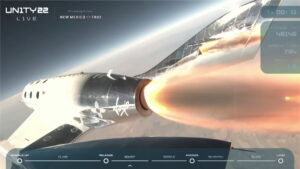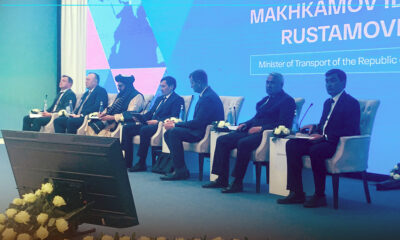Science & Technology
Billionaire Branson soars to space aboard Virgin Galactic flight
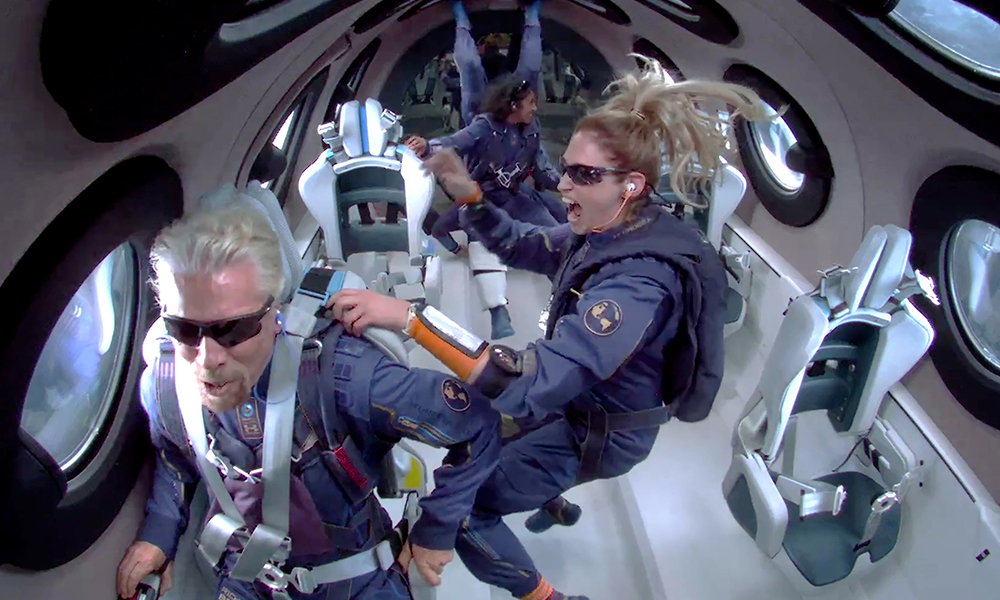
British billionaire Richard Branson on Sunday soared more than 50 miles above the New Mexico desert aboard his Virgin Galactic rocket plane and safely returned in the vehicle’s first fully crewed test flight to space, a symbolic milestone for a venture he started 17 years ago.
Branson, one of six Virgin Galactic Holding Inc employees strapped in for the ride, touted the mission as a precursor to a new era of space tourism, with the company he founded in 2004 poised to begin commercial operations next year.
“We’re here to make space more accessible to all,” an exuberant Branson, 70, said shortly after embracing his grandchildren following the flight. “Welcome to the dawn of a new space age.”
The success of the flight also gave the flamboyant entrepreneur bragging rights in a highly publicized rivalry with fellow billionaire Jeff Bezos, the Amazon online retail mogul who had hoped to fly into space first aboard his own space company’s rocket.
“Congratulations on the flight,” Bezos said on Instagram. “Can’t wait to join the club!”
Space industry executives, future customers and other well-wishers were on hand for a festive gathering to witness the launch, which was live-streamed in a presentation hosted by late-night television comedian Stephen Colbert. Joining the reception was another billionaire space industry pioneer, Elon Musk, who is also the founder of electric carmaker Tesla Inc.
Grammy-nominated R&B singer Khalid performed his forthcoming single “New Normal” after the flight.
The gleaming white spaceplane was carried aloft attached to the underside of the dual-fuselage jet VMS Eve (named for Branson’s late mother) from Spaceport America, a state-owned facility near the aptly named town of Truth or Consequences. Virgin Galactic leases a large section of the facility.
Reaching its high-altitude launch point at about 46,000 feet (14,020 m), the VSS Unity passenger rocket plane was released from the mothership and fell away as the crew ignited its rocket, sending it streaking straight upward at supersonic speed to the blackness of space some 53 miles (86 km) high.
The spaceplane’s contrail was clearly visible from the ground as it soared through the upper atmosphere, to the cheers of the crowd below.
At the apex of the climb with the rocket shut down, the crew then experienced a few minutes of microgravity, before the spaceplane shifted into re-entry mode, and began a gliding descent to a runway back at the spaceport. The entire flight lasted about an hour.
“I was once a child with a dream looking up to the stars. Now I’m an adult in a spaceship looking down to our beautiful Earth,” Branson said in a video from space.
Back at a celebration with supporters from a stage outside Virgin Galactic’s Gateway to Space complex at the spaceport, he and crewmates doused one another with champagne.
Retired Canadian astronaut Chris Hadfield pinned Virgin-produced astronaut wings onto the blue flight suits worn by Branson and his team. Official wing pins from the Federal Aviation Administration will be presented later, a company spokesman said.
HIGH-COST TICKETS
Virgin Galactic has said it plans at least two further test flights of the spaceplane in the months ahead before beginning regular commercial operation in 2022. One of those flights will carry four Italian astronauts-in-training, according to company CEO Michael Colglazier.
He said 600 wealthy would-be citizen astronauts have also booked reservations, priced at about $250,000 per ticket for the exhilaration of supersonic flight, weightlessness and the spectacle of spaceflight.
Branson has said he aims ultimately to lower the price to about $40,000 per seat as the company ramps up service, achieving greater economies of scale. Colglazier said he envisions eventually building a large enough fleet to accommodate roughly 400 flights annually at the spaceport.
The Swiss-based investment bank UBS has estimated the potential value of the space tourism market reaching $3 billion annually by 2030.
Proving rocket travel safe for the public is key.
An earlier prototype of the Virgin Galactic rocket plane crashed during a test flight over California’s Mojave Desert in 2014, killing one pilot and seriously injuring another.
SPACE RACE
Branson’s participation in Sunday’s flight, announced just over a week ago, typified his persona as the daredevil executive whose various Virgin brands – from airlines to music companies – have long been associated with his ocean-crossing exploits in sailboats and hot-air balloons.
His ride-along also upstaged rival astro-tourism venture Blue Origin and its founder, Bezos, in what has been popularized as the “billionaire space race.” Bezos has been planning to fly aboard his own suborbital rocketship, the New Shepard, later this month.
Branson has insisted he and Bezos are friendly rivals and were not racing to beat one another into space.
“We wish Jeff the absolute best and that he will get up and enjoy his flight,” Branson said at a post-flight news conference.
Blue Origin, however, has disparaged Virgin Galactic as falling short of a true spaceflight experience, saying that unlike Unity, Bezos’s New Shepard tops the 62-mile-high-mark (100 km), called the Kármán line, set by an international aeronautics body as defining the boundary between Earth’s atmosphere and space.
“New Shepard was designed to fly above the Kármán line so none of our astronauts have an asterisk next to their name,” Blue Origin said in a series of Twitter posts on Friday.
However, U.S. space agency NASA and the U.S. Air Force both define an astronaut as anyone who has flown higher than 50 miles (80 km).
A third player in the space tourism sector, Musk’s SpaceX, plans to send its first all-civilian crew (without Musk) into orbit in September, after having already launched numerous cargo payloads and astronauts to the International Space Station for NASA.
A Virgin Galactic spokesperson told the Wall Street Journal that Musk had bought a ticket for his own space ride. The newspaper said that it was not clear how far up the waiting list Musk is for a seat.
Representatives for Musk could not be immediately reached. Virgin Galactic and Tesla did not immediately respond to requests for comment.
The spaceplane’s two pilots were Dave Mackay and Michael Masucci. The three other mission specialists were Beth Moses, the company’s chief astronaut instructor; Virgin Galactic’s lead operations engineer Colin Bennett; and Sirisha Bandla, a research operations and government affairs vice president.
All recounted afterward being mesmerized by the view through Unity’s windows. Mackay described the immense blackness of space against the brightness of Earth’s surface, “separated by the beautiful blue atmosphere, which is very complex and very thin.”
“Cameras don’t do it justice,” he told reporters. “You have to see it with your own eyes.”
Science & Technology
Apple loses top phonemaker spot to Samsung as iPhone shipments drop, IDC says

Apple’s (AAPL.O), opens new tab smartphone shipments dropped about 10% in the first quarter of 2024, hurt by intensifying competition by Android smartphone makers aiming for the top spot, data from research firm IDC showed on Sunday.
Global smartphone shipments increased 7.8% to 289.4 million units during January-March, with Samsung (005930.KS), opens new tab, at 20.8% market share, clinching the top phonemaker spot from Apple, Reuters reported.
The iPhone-maker’s steep sales decline comes after its strong performance in the December quarter when it overtook Samsung as the world’s No.1 phone maker. It’s back to the second spot, with 17.3% market share, as Chinese brands such as Huawei gain market share.
Xiaomi, one of China’s top smartphone makers, occupied the third position with a market share of 14.1% during the first quarter, read the report.
South Korea’s Samsung, which launched its latest flagship smartphone lineup – Galaxy S24 series – in the beginning of the year, shipped more than 60 million phones during the period.
Global sales of Galaxy S24 smartphones jumped 8%, compared to last year’s Galaxy S23 series during their first three weeks of availability, data provider Counterpoint previously said.
In the first quarter, Apple shipped 50.1 million iPhones, down from 55.4 million units it shipped same period last year, according to IDC.
Apple’s smartphone shipments in China shrank 2.1% in the final quarter of 2023 from a year earlier.
The drop underscores the challenges facing the U.S. firm in its third biggest market, as some Chinese companies and government agencies limit employees’ use of Apple devices, a measure that mirrors U.S. government restrictions on Chinese apps on security grounds.
The Cupertino, California-based company in June will hold its Worldwide Developers Conference (WWDC), where it will highlight updates to the software powering iPhones, iPads, and other Apple devices.
Investors are closely watching for updates on artificial intelligence development at Apple, which has so far spoken little about incorporating the AI technology into its devices. The company earlier this year lost the crown as the world’s most valuable company to Microsoft (MSFT.O), opens new tab, Reuters reported.
Science & Technology
China launch of relay satellite Queqiao-2 for lunar probe mission successful

China National Space Administration (CNSA) said on Friday its launch of a key signal relay satellite was a “complete success” and it would serve as the communication bridge for its future lunar probe missions for years to come, state media reported.
China launched the satellite Queqiao-2, which was named after a mythological bridge made of magpies, and two miniature satellites, Tiandu-1 and Tiandu-2, on March 20.
Queqiao-2 will be used as a communications bridge between the ground operations on earth and upcoming lunar probe missions on the far side of the moon until at least 2030.
The moon’s near side always faces earth. That means data transfers from the far side are impossible because there is no direct line of sight.
Queqiao-2 researcher and developer Xiong Liang described the satellite as “the main switch” of the whole fourth phase of lunar missions, according to state television CCTV.
“Only when the main switch is flipped on, all the communications can kick off,” Xiong said.
Queqiao-2 will orbit the moon and relay signals to and from the Chang’e-6 mission, which expected to be launched in May. The robotic Chang’e-6 probe will seek to retrieve samples from an ancient basin, acquiring lunar material from the moon’s hidden side for the first time.
Queqiao-2 will also be used as a relay platform for the Chang’e-7 lunar mission in 2026 and the Chang’e-8 mission in 2028.
The functions and performance of Queqiao-2 met mission requirements and it will be able to provide relay communication services for China’s lunar exploration projects and future lunar missions for China and other countries, said the CNSA, according to CCTV.
Queqiao-2 entered its targeted elliptical orbit on April 2 after a correction midway, near-moon braking and orbital manoeuvre around the moon, CNSA said.
The satellite has successfully communicated with Chang’e 4, which was the first spacecraft to perform a soft landing on the far side of the moon and is still carrying out its exploration mission. It also communicated with the Chang’e-6 probe while it is still on the ground earlier this month.
The successful launch of Queqiao-2 comes after the failed launch of another lunar spacecraft DRO-A/B satellites, which was intended to enter the moon’s distant retrograde orbit (DRO).
China has not released any information on whether or not the satellites can be retrieved.
(Reuters)
Science & Technology
Russia aborts planned test launch of new heavy-lift space rocket

Russian space officials on Tuesday aborted the test launch of a new heavy-lift rocket from its far-eastern launch pad.
The Angara-A5 rocket was scheduled to lift off from the Vostochny space launch facility at 0900 GMT Tuesday, but the launch was aborted two minutes before, AP reported.
Yuri Borisov, head of Roscosmos state space corporation, said the automatic safety system canceled the launch after registering a flaw in the oxidizer tank pressurization system.
He said the next launch attempt was set for Wednesday.
Tuesday’s launch was to be the fourth for the Angara-A5, a heavy-lift version of the new Angara family of rockets that has been developed to replace the Soviet-designed Proton rockets.
-

 Sport5 days ago
Sport5 days agoRashid Khan threatens BBL pullout after Australia postpones Afghanistan T20I series
-
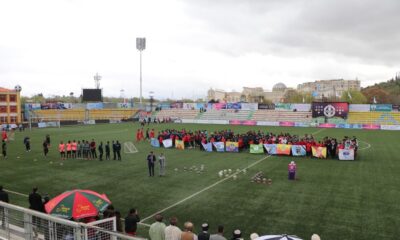
 Sport4 days ago
Sport4 days agoAfghanistan Champions League kicks off with grand opening ceremony
-
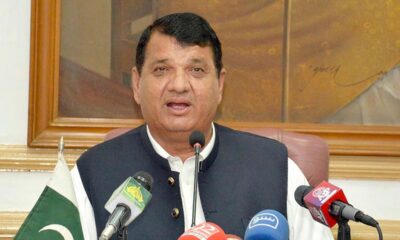
 Latest News3 days ago
Latest News3 days agoPakistan’s frontiers minister stresses ‘dignified’ return of Afghan refugees
-
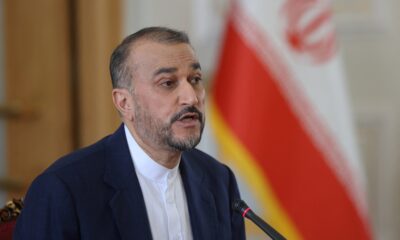
 Regional4 days ago
Regional4 days agoIran’s foreign minister downplays drone attack, says Tehran investigating
-
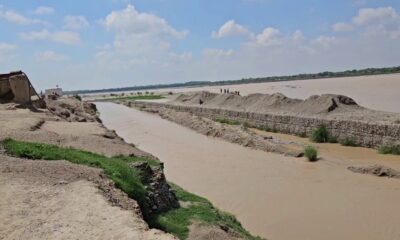
 Latest News5 days ago
Latest News5 days agoTen people killed by floods in Helmand
-

 Business4 days ago
Business4 days agoAfghanistan’s economic prospects are bleak: World Bank
-
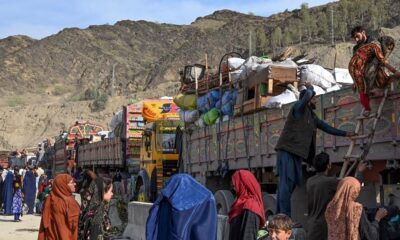
 Latest News4 days ago
Latest News4 days agoMore than 800 Afghan refugees deported from Pakistan in two days
-
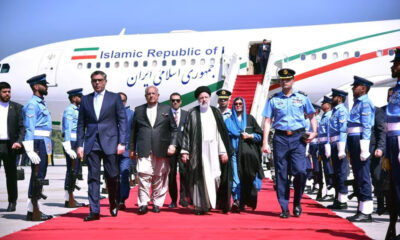
 Regional2 days ago
Regional2 days agoIranian president lands in Pakistan for three-day visit to mend ties

